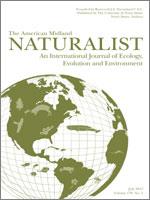Tallgrass prairie is the most endangered ecosystem in North America, with less than one percent of its original extent remaining. The Nature Conservancy (TNC) has restored over 9000 ha of crop and fallow lands adjacent to native prairie with a primary goal of buffering remnant prairies to maintain plant community composition and reduce invasion by nonnative plants. We tested the efficacy of this approach by measuring plant community parameters at four TNC prairie restoration sites in Iowa, Minnesota, Illinois, and Indiana. We tested whether restorations protected remnant prairies from nonnative plants by comparing the effect of neighboring land use on community composition along transects running from the prairie edges toward the interior. Nonnative dominance increased from interior to edges by 78% when adjacent to roads/abandoned lands and by 29% when adjacent to crops, but remained even (and low) when adjacent to prairie restorations (nonsignificant increase of 5–11% for high and low diversity restorations). Native plant richness was maintained in prairies adjacent to restorations (nonsignificant losses of 0.03 species/0.25 m2 for low species richness restorations and 1.1 species/0.25 m2 for high species richness restorations from interior to edge), significantly less than the 3.8 species/0.25 m2 lost from interior to edge next to roads/abandoned lands. The change in native richness next to cropland was intermediate, but nonsignificant, with a loss of 1.4 species/0.25 m2. These results suggest that managers may be able to buffer remnant prairies against nonnative species invasion and protect native plant diversity by targeting restorations of roadsides, abandoned lands, and other adjacent areas dominated by non-native plants.
How to translate text using browser tools
1 July 2013
Prairie Restorations can Protect Remnant Tallgrass Prairie Plant Communities
Helen I. Rowe
ACCESS THE FULL ARTICLE
It is not available for individual sale.
This article is only available to subscribers.
It is not available for individual sale.
It is not available for individual sale.

The American Midland Naturalist
Vol. 170 • No. 1
July 2013
Vol. 170 • No. 1
July 2013




